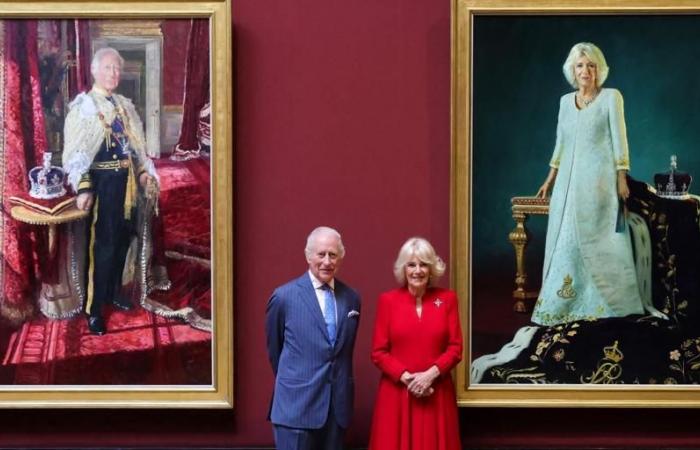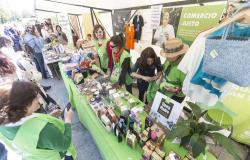
This Tuesday, King Carlos III and Queen Camila visited the National Gallery of London to preside over the official reopening of the Sainsbury Wingan event that culminates an ambitious architectural renewal project developed for two years, and that coincided with … The second anniversary of the monarch coronation, who also exercises as a real employer of this historic institution.
Reopening is registered in the context of the bicentennial of the gallery, founded in 1824, and represents one of the most significant moments within a celebrations program that has had as a central axis the rereading of the museum as Democratic spaceopen and in constant transformation.
The renovation project, led by the New York Study Seldorf Architects in collaboration with the British Purcell firm, has meant a deep intervention in the structure and functionality of the west wing of the museum, which was originally inaugurated in 1991 by Queen Elizabeth II and conceived by the architects Venturi and Scott Brown as an extension of the Wilkins building, a neoclassical heart of the set.
Far from being limited to a simple aesthetic update or a technical improvement of spaces, the transformation of the Sainsbury Wing has aimed entrenched that the paintings belong to all and that the entrance to the gallery is free ».
Among the main structural changes that have been implemented, are the opening of the entrance lobby through the Column elimination Non -structural that previously obstructed visibility and hindered the flow of people, the replacement of tinted glass with transparent glass to improve natural lighting, and the creation of a curved mezzanine that allows a more direct visual and acoustic relationship between the different levels of the building. Likewise, the museum store, the information point and the common areas have been reconfigured, thus seeking to optimize the circulation of visitors and transmit a better welcome feeling.
Historical identity
Although the initial announcement of the project, in 2022, was received with criticism from some sectors that feared a disfiguration of the original postmodern character of the wing, the final result is for the sources of the gallery a substantial improvement that respects the historical identity of the building while adapting it to the needs and expectations of the 21st century public. Not surprisingly, it is estimated that more than 90% of visitors will now use this entry, which reinforces the central role that the Sainsbury Wing will play as an access door to the National Collection.
During their tour of the Museum, the Kings visited the new facilities and discovered a commemorative registration carved in stone at the foot of the main staircase, just below the one remembers the original inauguration by Queen Elizabeth, and toured the rooms of the ambitious exhibition ‘CC Land: The Wonder of Art’an integral reorganization of the permanent collection that will be opened to the public on May 10 and that constitutes the first total restructuring from the opening of the wing in 1991.
-This reorganization, qualified as “unrepeatable” by its curators, includes a thousand works that draw a chronological tour of European painting from the thirteenth century to the 20th century, and has allowed about 40% of the 2,626 paintings that make up the collection are now on display, a percentage that could reach 50% once it concludes the current temporary exhibition over Siena.
The new disposition of the works, without altering the historical scheme that separates the schools of the north and southern Europe or the chronological sequence from west to east, however introduces a more flexible and thematic approach that «allows us to highlight relationships between artists, cross influences and shared cultural contexts« that were previously diluted or fragmented in the previous organization, according to sources.
In addition, an intentional effort has been made to give greater visibility to women artists, whose works, although scarce due to the historical limitations of access to the trade before the 19th century, now occupy a more prominent place: of the 27 works signed by women who have the gallery, 12 are currently exposed, including pieces of Artemisia Gentileschi, Judith Leyster, Rachel Ruysch, Rosa Bonheur and Berthe Morisot.
Official Coronation Portraits
In the central hall, another of the outstanding moments of the day was the revelation of the Official Coronation Portraitscommissioned to artists Peter Kuhfeld and Paul S. Benney. In the queen’s portrait, painted by Benney, Camila appears with the dress designed by Bruce Oldfield and the Queen Maria crown, while the king, portrayed by Kuhfeld, carries the imperial crown and the state mantle.
Both portraits will become part of the Royal Collection And they will be on display at the National Gallery until June 5, before being transferred to the throne room of the Buckingham Palace. “I wanted to paint the king as someone human and royal at the same time,” Kuhfeld said, while Benney said he had tried to capture “humanity and empathy” of the queen. When contemplating his portrait, Camila commented naturally: “I just love”, while the king praised the “wonderful composition” of the work.
Beyond institutional symbolism, the reopening of the Sainsbury Wing is a necessary impulse for the National Gallery, which in 2019 received more than six million visitors, a figure that was reduced by just over three million in 2024 due to the prolonged effects of the pandemic and at the partial closure of the museum. The gallery now bets on recovering and even overcoming those levels of assistance, in 2027, trusting that the combination between a renewed museum experience, a collection presented more clearly and a more accessible and cozy entry they manage to reconnect the public with their art.





